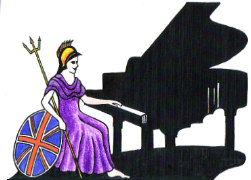Piano Dealers Shops Retailers Selling Pianos,
and Music
Pianos For Sale Robert Morley & Company Ltd., Pianos for Sale UK

UK Piano Page

from Robert Morley & Company Ltd.
Price: £2,790.00
Date: 14-06-2024 08:44AM
Expiration Date: 30-06-2027 08:41AM

Regency Workshops
Hunters Bar
Sheffield, South Yorkshire S1 2PN
England
Suppliers of quality pianos, new and secondhand
20 Moorfield Drive
Baildon
Shipley, West Yorkshire BD17 6LQ
England
Cunningham Piano always has a varied selection of
94 Kingston Road
Wimbledon
Merton, London SW19 1LA
England
3a Red Brae Drumalig Road
Temple
Antrim, County Antrim Bt27 6UD
Northern Ireland
Specialising in top quality mint condition used
131 Moneynick Road
Randalstown, County Antrim BT41 3HU
Northern Ireland
We Keep a wide range of upright and grand pianos
Music Festival for performers and guests Our 10th
18-06-2022 12:30PM
The Morecambe Bay Piano Group was set up to extend
11-12-2021 01:00PM
The Morecambe Bay Piano Group was set up to extend
08-01-2022 01:00PM
The Morecambe Bay Piano Group was set up to extend
12-02-2022 01:00PM